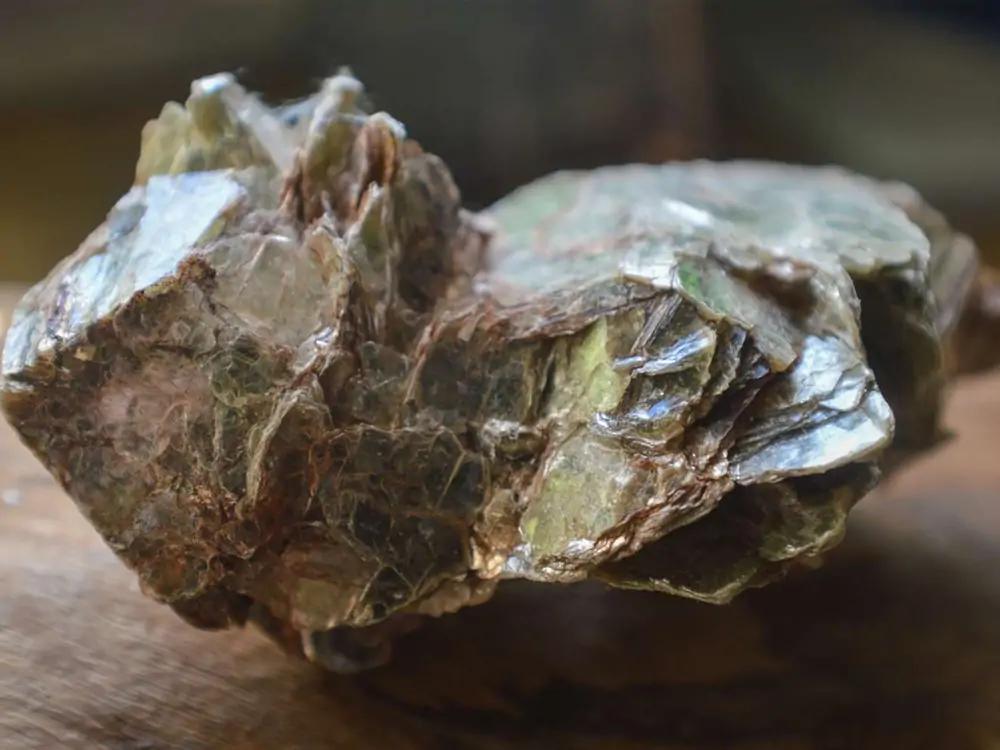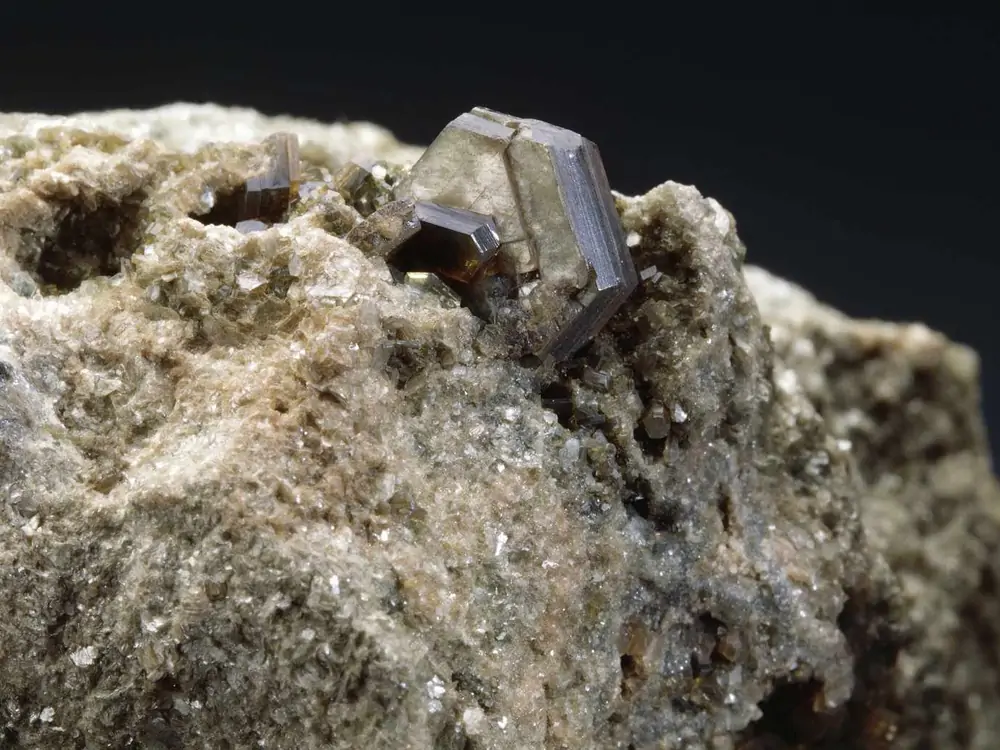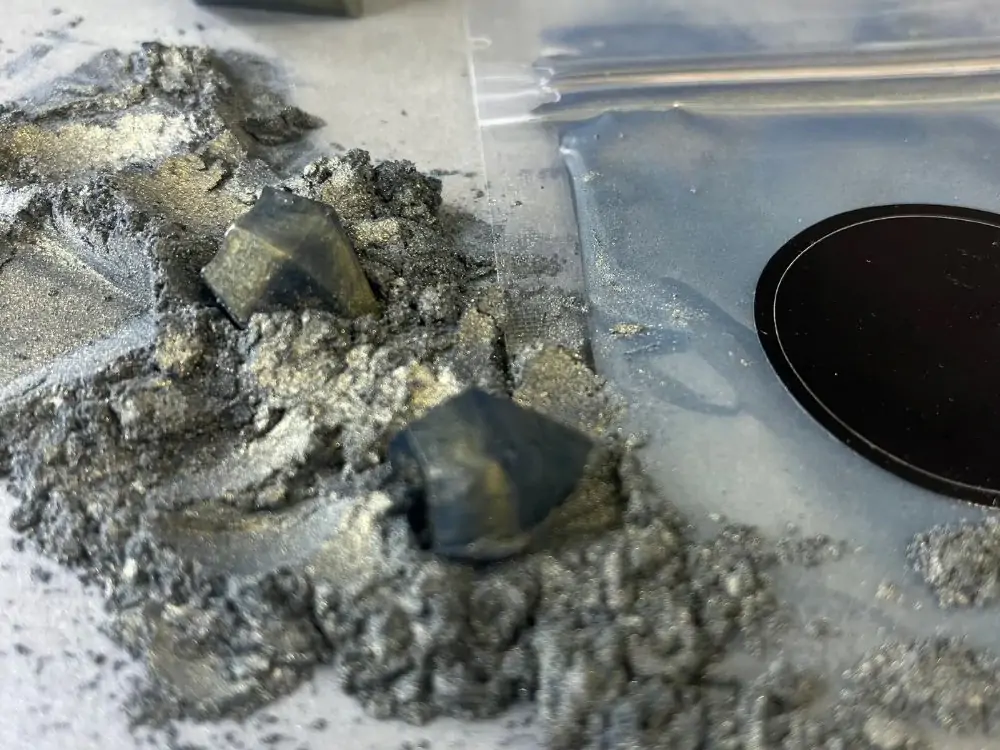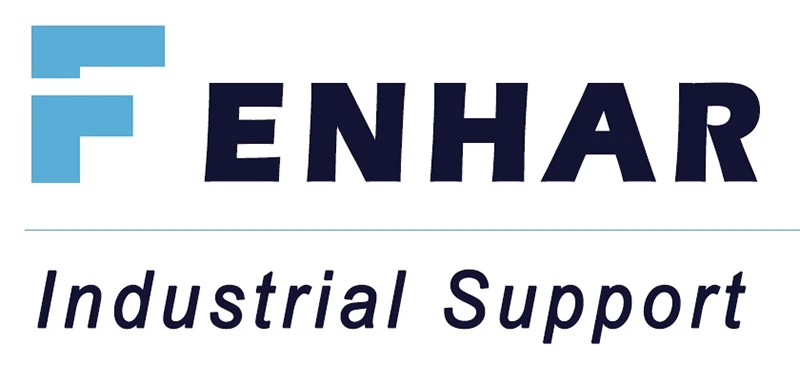What is mica?
Mica is a mineral renowned for its exceptional properties and widespread applications. This shimmering mica mineral belongs to the silicate family and boasts remarkable characteristics.

Definition and characteristics of mica
It is a naturally occurring mineral known for its unique properties. It possesses a layered structure and is highly resilient, heat-resistant, and electrically insulating. Mica is also transparent, allowing light to pass through, and it can be split into thin sheets. These qualities make it a versatile and sought-after material. Mica is used in various applications in the form of grounded mica powder, mica sheet, and mica paper.
A brief history of mica’s discovery and early usage
Mica’s history dates back centuries when it was first discovered by ancient civilizations. Ancient Egypt and India first used it for decoration and insulation purposes in ancient times. Over time, mica found applications in various industries due to its remarkable characteristics.
Purpose of the article – exploring the diverse applications of mica
The purpose of this article is to explore the diverse applications of mica in modern times. Industries such as electronics, automotive, construction, and cosmetics heavily rely on mica. Its industrial importance is due to its superior thermal and electrical insulation properties.
Mica Geological Insights: Understanding Mica’s Formation and Occurrence
Mica is a mineral with distinct properties. It is mainly composed of aluminum silicate and potassium. It forms in thin, sheet-like layers. These layers contribute to its exceptional flexibility and transparency. Its hardness, low conductivity, and heat resistance make mica valuable in diverse applications.
Mica-bearing rock formations are prevalent worldwide, found in igneous, metamorphic, and sedimentary rocks. It occurs in large quantities in regions with extensive geological activity. Such as India, China, and Russia. Mica deposits also occur in Brazil, the United States, and several African countries.
Industrial Uses of Mica
It is a versatile mineral, that finds its application in various industries. Let’s explore its significance in different sectors.

Electrical and Electronic Industry
- Mica serves as a crucial material in the electrical and electronic industries. It provides excellent insulation for electrical components, ensuring safety and efficiency.
- Capacitors and resistors employ it for their exceptional dielectric properties.
- Moreover, mica-based thermal management solutions aid in dissipating heat effectively. It prevents equipment from overheating.
Building and Construction
- In the building and construction sector, mica plays a vital role. It is utilized in manufacturing wallboards and drywalls, enhancing their strength and durability.
- Additionally, it acts as an efficient heat and sound insulator. It improves the overall comfort and energy efficiency of buildings.
Paints, Coatings, and Pigments
- Mica significantly contributes to the durability and texture of paints and coatings. Its incorporation enhances their resistance to wear and tear, extending their lifespan.
- Mica-based pearlescent pigments produce captivating iridescence, enhancing aesthetics in diverse products. These pigments create mesmerizing effects, adding aesthetic appeal to various items.
Plastics and Rubber Industry
- Mica-reinforced materials exhibit enhanced strength and heat resistance. These particles effectively reinforce plastics, making them suitable for demanding applications.
- Additionally, it has a role as an anti-blocking agent in rubber products. It prevents them from sticking together, improving their usability.
Automotive and Aerospace Applications
- Mica acts as a reinforcing agent in brake pads and clutches. It enhances their performance and durability.
- Furthermore, It has been use in thermal and electrical insulation for aircraft. It ensures the safety and efficient operation of critical systems.
Uses of Mica in Art and Craft
It is a group of minerals found in the form of light colors and dark colors. These colored materials are ground to make mica powder which use in art and craft.

Historical uses of mica in traditional art forms
Throughout history, it has played a vital role in traditional art forms. It spans various cultures worldwide. Artisans incorporated mica into paintings, sculptures, and decorative elements. The shimmering and translucent qualities of it added a beautiful gleam to their creations. Egyptians and Native Americans used it in masks, pottery, and jewelry to enhance natural brilliance.
Contemporary artists and their innovative uses of mica
In the modern art scene, mica continues to captivate artists. They experiment with mica-infused paints, creating mesmerizing pieces that interact with light. Sculptors skillfully integrate mica flakes, adding an ethereal dimension to their artworks. Mica sheets become standalone canvases, pushing creative boundaries in mixed-media masterpieces.
Mica-based craft projects and DIY ideas
Beyond the realm of fine art, mica has found its way into various craft projects and DIY endeavors. Crafters and hobbyists use mica powders to embellish handmade cards. Mica flakes also find application in resin art. It adds a mesmerizing depth and texture to jewelry and decorative pieces. In candle-making, mica pigments enhance the candles’ appearance and make them eye-catching additions. Moreover, mica’s versatility extends to cosmetics. As DIY enthusiasts incorporate mica powders into homemade makeup products. Such as shimmering eyeshadows and highlighters.
Uses of Mica in Cosmetics and Personal Care Products
Mica powder also uses in cosmetics and personal care products. It has huge benefits in the makeup industry.
Mica in Makeup and Beauty Products:
Mica plays a vital role in makeup and beauty products. This flaky glittery material adds a touch of glamour to various items like eyeshadows, blushes, and highlighters. This naturally occurring mineral is finely ground to create a shimmering effect for mica cosmetics. This shimmer enhances the overall texture and appearance of these products. It can refract light and helps achieve a radiant and luminous finish. This ability makes it a popular choice among cosmetic manufacturers.
Shimmering and Light-Reflecting Properties of Mica:
One of the standout features of mica is its shimmering and light-reflecting properties. It adds a captivating dimension to makeup and personal care products. The interplay of light and mica creates a stunning, radiant effect on the skin’s surface. This makes it a beloved ingredient in various beauty items.
Controversy Surrounding Child Labor in Mica Mining for Cosmetics:
Child labor in mica mining for cosmetics sparks controversy. Children are exploited in dangerous mines. Although, Mica is a mineral used in makeup and other products. Many companies are unaware of unethical sourcing. Cosmetic brands must take responsibility for their supply chains. They should also ensure that mica sourcing is ethical and free from child labor.
Mica in the Oil and Gas Industry
Overview of Mica Usage in Drilling Fluids:
Mica is widely used in drilling fluids for its exceptional properties. Its natural flake-like structure offers lubrication, improving drilling efficiency. Mica also acts as a viscosifier. It enhances fluid properties and prevents excessive fluid loss. The unique platelet shape of mica particles helps form a stable filter cake on the wellbore. It reduces fluid invasion into porous formations. Moreover, Mica’s stability endures high drilling temperatures, ensuring reliable performance in operations.
Mica’s Role in Preventing Lost Circulation:
Lost circulation during drilling poses challenges, but mica additives rescue the situation. By incorporating mica into drilling fluids, it mitigates lost circulation risks. It maintains pressure balance and reduces non-productive time. It also ensures efficient and cost-effective drilling operations for improved well productivity.
Enhancing Wellbore Stability with Mica Additives:
Ensuring wellbore stability is critical during drilling. Mica additives play a vital role, with their flat and robust particles forming a protective layer on the wellbore wall. This reinforcement is crucial, especially in complex geological formations. It reduces the risk of stuck pipe incidents and costly workovers. It promotes stability, leading to successful oil and gas exploration.
Mica Use in Modern Technology
Electronics and Gadgets
Mica serves diverse roles in modern electronics and gadgets in daily life. It insulates and enhances capacitors in smartphones, tablets, and computers. It ensures stable performance and faster data transmission.
Additionally, mica plays a crucial role in thermal management. It effectively dissipates heat, prevents overheating, and increases device durability. As a result, electronic gadgets become more powerful and reliable.
Renewable Energy
Mica plays a crucial role in renewable energy technologies. It supports solar panels for efficient energy conversion. It provides mechanical backing and electrical insulation to photovoltaic cells. In this way, it enables clean electricity from sunlight. This contributes to a sustainable future, making solar power a viable alternative to fossil fuels.
Likewise, mica plays a vital role in wind turbines. Its use as an electrical and thermal insulator ensures the reliable operation of wind turbine generators. By enhancing energy efficiency, mica helps harness more power from wind energy. It reduces our dependence on non-renewable resources.
Environmental Impact and Sustainability
Mica mining has several environmental bad effects as well. Let’s discuss some of its environmental impacts and sustainability measures to mitigate its bad effects.
Environmental Impact of Mica Mining:
- Deforestation and habitat destruction due to mining operations.
- Soil erosion and degradation from open-pit mining practices.
- Water pollution and contamination from waste discharge and chemicals.
- Air pollution is caused by dust and emissions from mining activities.
- Disruption of local ecosystems and loss of biodiversity.
- The exploitation of child labor and unsafe working conditions in some regions.
Sustainability Measures for Mica Mining:
- Implementing responsible mining practices to minimize environmental damage.
- Promoting reforestation and habitat restoration efforts in mined areas.
- Adopting proper waste management systems to prevent water and soil pollution.
- Investing in technology to reduce emissions and improve air quality.
- Supporting ethical and fair labor practices, ensuring no child labor involvement.
Uses of Mica and Sustainable Alternatives:
- Mica used in cosmetics and paints can be replaced with synthetic alternatives.
- Explore eco-friendly substitutes for mica in electronics and electrical industries.
- Encourage companies to use recycled mica or invest in sustainable sourcing.
- Raise awareness among consumers about the impact of mica usage and alternatives.
Collaborative Approach:
- Governments, industries, and communities must work together to enforce sustainable practices.
- Promote transparency and accountability in the mica supply chain to address issues effectively.
- Support research and innovation for greener mining and mica alternatives.
